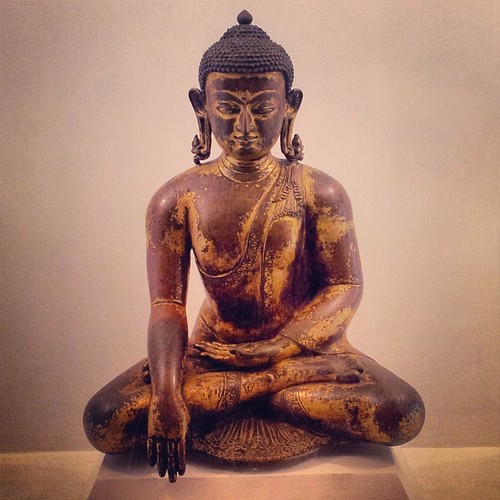Unveiling the Rich History of Buddhism
Buddhism, with its teachings of mindfulness, compassion, and the pursuit of enlightenment, has captivated hearts and minds for over 2,500 years. Its journey, originating in ancient India, has been one of fascinating evolution, adaptation, and global impact. Today, we embark on a historical exploration, delving into the key milestones that shaped this remarkable tradition.
The Seeds of Awakening: Siddhartha Gautama and the Birth of Buddhism
https://www.worldhistory.org/Siddhartha_Gautama/
Our story begins in 6th century BCE India, with the birth of Siddhartha Gautama, a prince sheltered from life's harsh realities. Yet, upon encountering sickness, old age, and death, he embarked on a profound spiritual quest. After years of meditation and self-denial, under the Bodhi tree, he attained enlightenment, becoming the Buddha, "the Awakened One."
The Buddha's core teachings focused on the Four Noble Truths: the reality of suffering, its cause (attachment and desire), the possibility of its end (liberation), and the path to achieve it (the Eightfold Path). These principles resonated with many, forming the foundation of the Sangha, the Buddhist community.
From Monasteries to Empires: The Spread of Buddhism in India
Initially, Buddhism spread through oral transmissions within monastic communities. However, Emperor Ashoka, deeply moved by the Buddha's teachings, embraced Buddhism in the 3rd century BCE. His patronage led to the construction of stupas, monuments enshrining relics, and the propagation of Buddhist ideals across his vast empire.
This period witnessed the emergence of two major schools: Theravada, emphasizing individual liberation through strict monastic discipline, and Mahayana, focusing on helping all beings achieve enlightenment. These branches laid the groundwork for Buddhism's diverse expressions that would emerge centuries later.
Embracing New Shores: Buddhism's Silk Road Journey
Buddhism's expansion transcended geographical boundaries. Driven by missionaries and merchants, it traveled along the Silk Road, reaching Central Asia, China, Korea, and Japan. Each region embraced and adapted the tradition, giving rise to unique artistic expressions, philosophical interpretations, and new schools of thought.
In China, Mahayana flourished, giving birth to Chan (Zen) Buddhism, emphasizing meditation and sudden enlightenment. Tibetan Buddhism, influenced by local Bon traditions, developed its own rich tapestry of rituals, tantric practices, and the concept of reincarnated spiritual leaders, the Dalai Lamas.
Buddhism Today: Facing Modern Challenges and Enduring Values
Throughout centuries, Buddhism has faced challenges, from persecution to adaptation to modern life. Yet, its core message of compassion, mindfulness, and the pursuit of liberation continues to resonate. Today, with an estimated 500 million followers worldwide, Buddhism remains a vibrant and diverse tradition, offering solace, meaning, and guidance in a rapidly changing world.
From the quiet contemplation of a Zen garden to the bustling prayer wheels in Tibetan monasteries, Buddhism's legacy lives on. It reminds us that the path to inner peace and understanding transcends cultures and eras, offering a timeless message for a world yearning for connection and spiritual fulfillment.
Further Exploration:
This article provides a glimpse into the vast and rich history of Buddhism. If you're interested in delving deeper, consider exploring:
- Specific Buddhist schools and their unique practices.
- The lives and teachings of influential Buddhist figures.
- The role of Buddhism in art, literature, and architecture across different cultures.
- The contemporary expressions of Buddhism and its relevance in the modern world.
Remember, the journey of understanding Buddhism is a lifelong pursuit. Let this article be your starting point on a path of exploration, discovery, and perhaps, even your own awakening.



































































